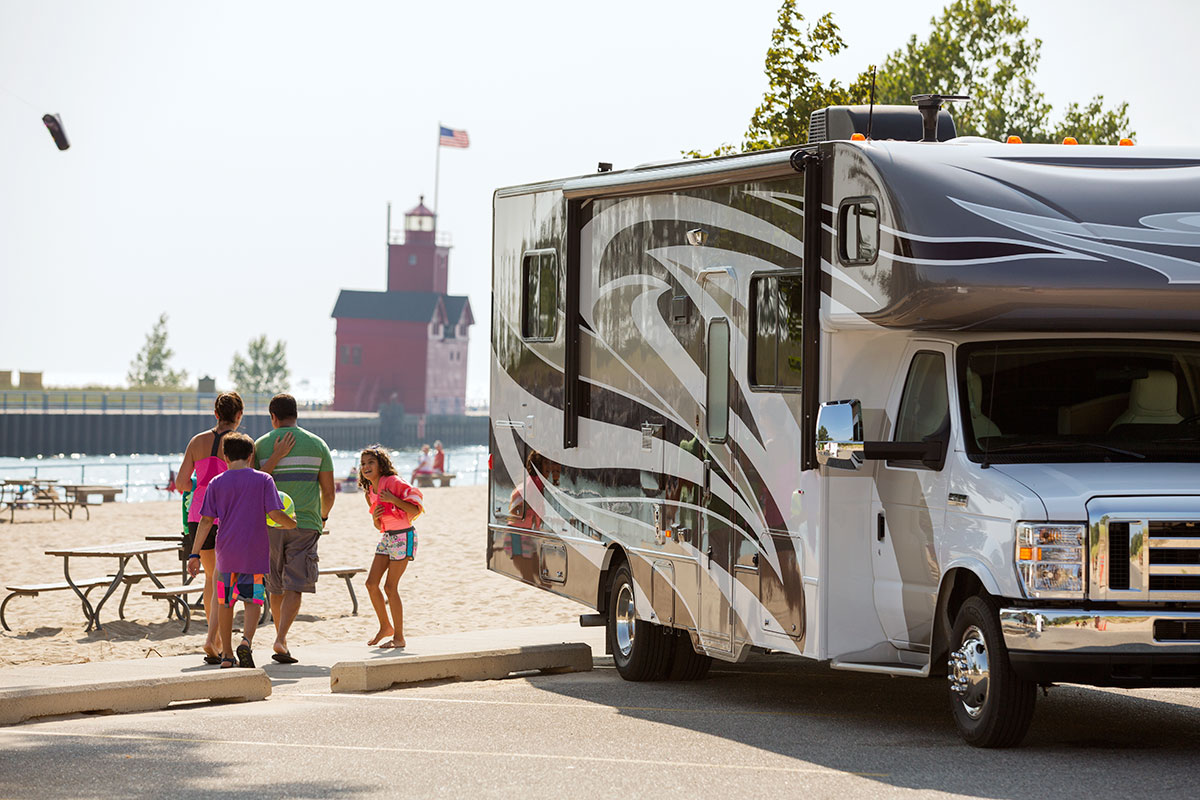An odometer is an essential part of your RV (Class A, Class B, and Class C), or your truck or car’s dashboard (if you have a towable or a toad). This handy little instrument helps you keep track of the distance you’ve traveled in a particular vehicle. We’re all used to seeing it every time we get behind the wheel, and we watch the numbers tick upward as we go about our travels and side adventures. But an odometer is more than “just numbers.” Those numbers mean something.
In this article, we’ll focus on those RV types with an odometer built in. In essence, your coach, like all road vehicles, is a machine we operate to travel over distances. And along your ownership journey and the life of your RV, there are mileage milestones where maintenance is recommended. Adhering to this schedule prolongs the life of your RV and reduces stress and the risk of unpleasant surprises because you know it’s is well-maintained. Thanks to your odometer – and a notebook to keep it all straight – you can easily monitor…
- Every 3,000 miles: Oil and oil filter change, just like on a standard vehicle.
- Every 6,000 miles: Chassis lubrication to keep all of the moving parts of your RV’s engine and transmission operating harmoniously.
- Every 12,000 miles: Front wheel bearing repack; fuel filter replacement (sooner if clogged); review and replace spark plugs.
- Every 12,000-30,000 miles: Transmission service depending on your vehicle’s gross weight and whether or not the RV is driven regularly under these conditions: heavy city traffic with hot outdoor temperatures, hilly or mountainous terrain, or frequent trailer-pulling. If you say yes to any of these conditions, then 12,000-15,000 is reasonable, otherwise, you can wait until 24,000-30,000 miles depending on your gross weight.
- Every 24,000 miles: Cooling system service (drain, flush, and refill with new coolant); air cleaner element replacement (more if under dusty conditions).
- Variable: The life of your RV’s tires hinges on multiple variables, including mileage. Many tire manufacturers have recommended mileages before replacement is needed; however, you can extend the life of your tires – or shorten it – depending on how well you take care of them. Appearance is always the better indication of whether or not they need replacing.
Just because your mileage “says” your RV is “old” doesn’t mean it is. Vehicles now can go thousands more miles than their predecessors, just because of the materials and the construction. But it all depends on you. If you keep up with the routine maintenance, fix things when they need attention instead of putting them off, and drive your RV regularly (don’t let it sit lounging around too long – that can have negative effects), then an older, higher mileage RV can be in better shape and more reliable than a younger, low mileage RV. Use your odometer as a tool to help ensure a long and happy life for your coach.

